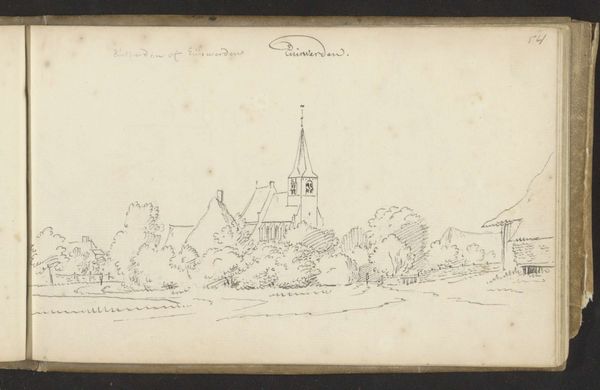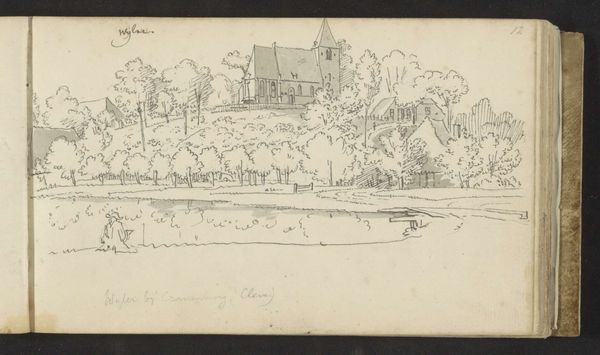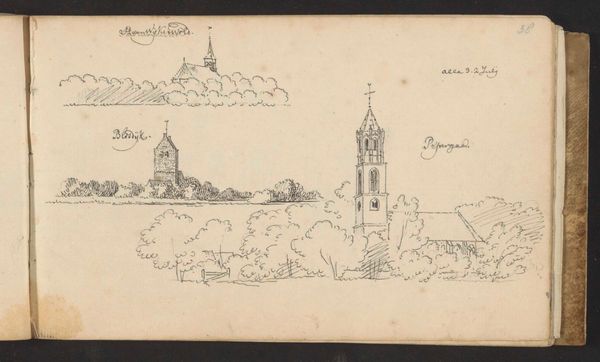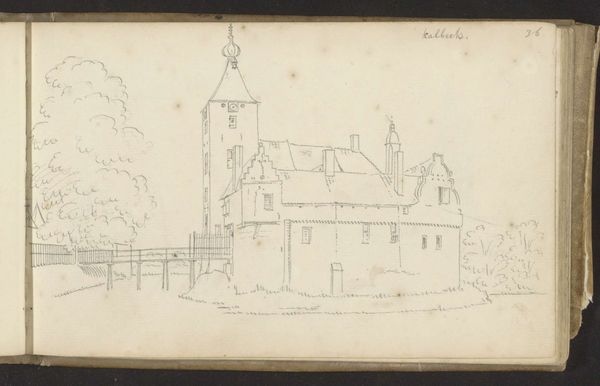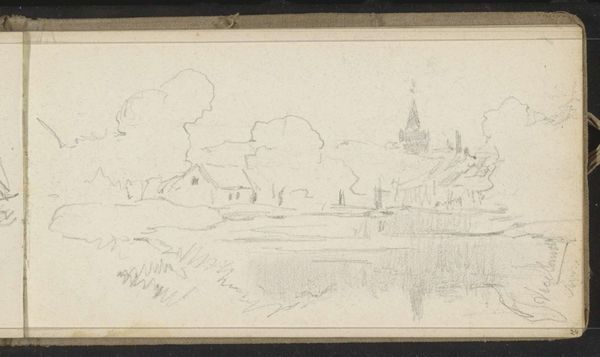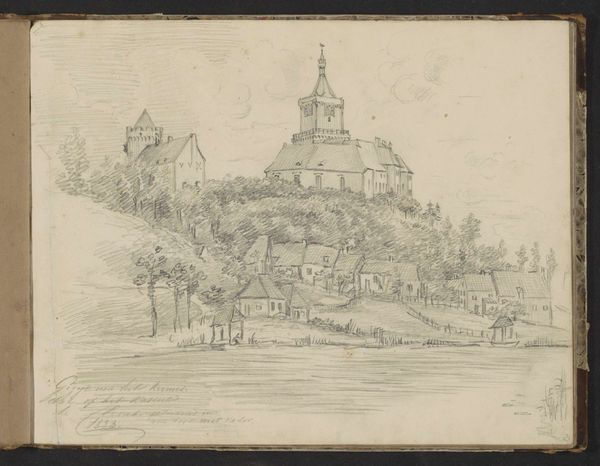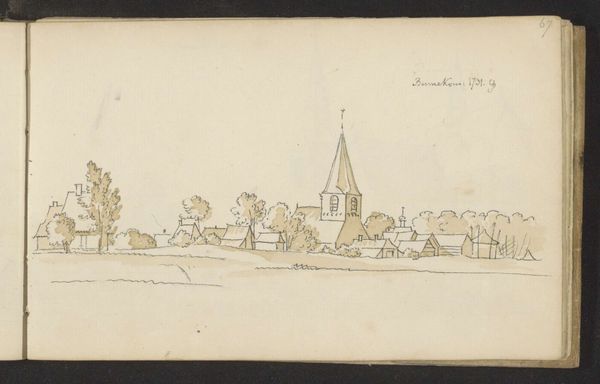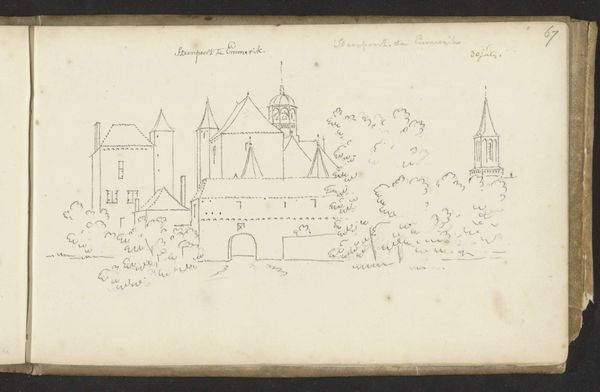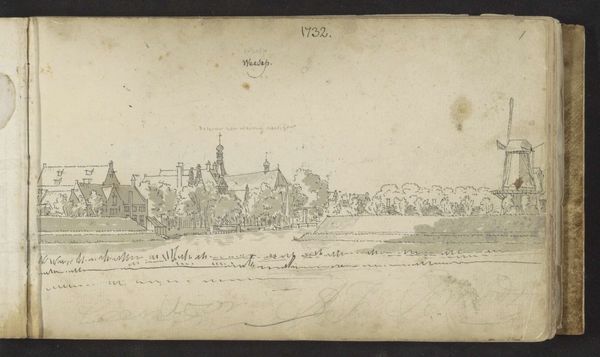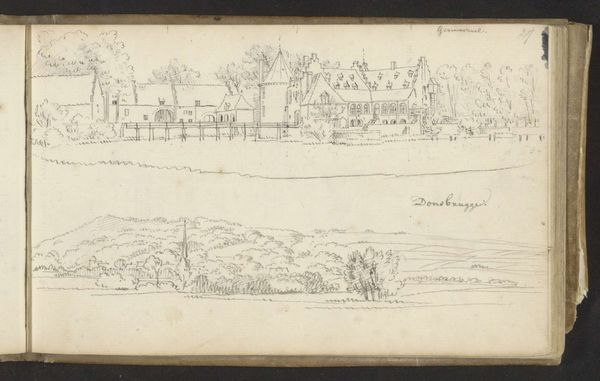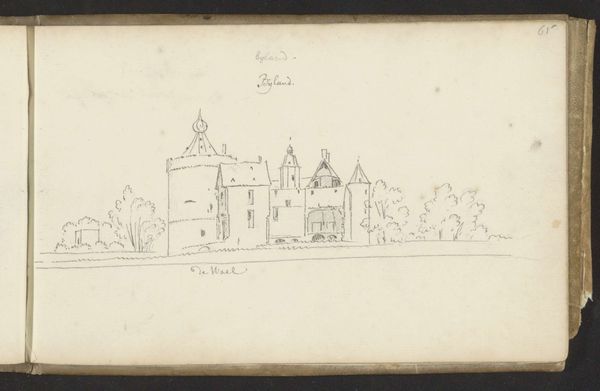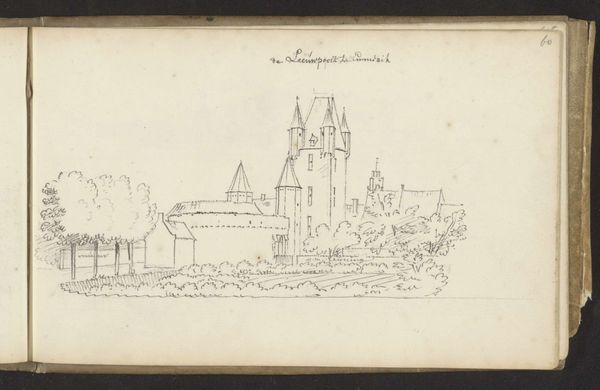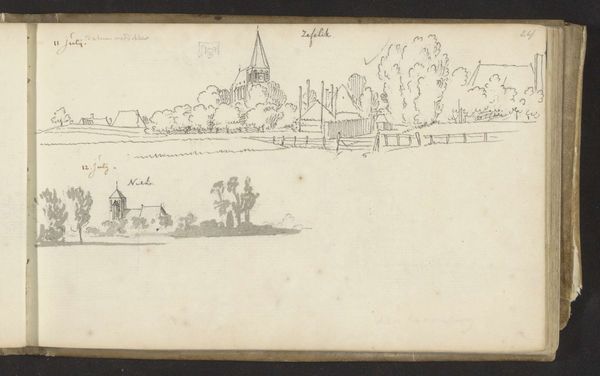
drawing, ink, pen
#
drawing
#
pen sketch
#
landscape
#
ink
#
geometric
#
pen
Copyright: Rijks Museum: Open Domain
Curator: Looking at this landscape by Abraham de Haen II, titled "View of Hoog Elten and Elterberg," crafted in 1731 with pen and ink, one can't help but immediately register the geometric tension in the scene. What strikes you first? Editor: It has a quiet fragility. The faint ink lines, almost a whisper against the page, evoke a landscape holding its breath. The spire and rooftops suggest more than just buildings, but perhaps power dynamics embedded in the village structure? Curator: Exactly! That spire pierces the skyline, dominating a cluster of buildings. Think of the Reformation era—the religious hierarchies symbolized in the architectural dominance, perhaps the Church’s sway over everyday life meticulously etched on this page. The location itself, along the Dutch-German border, suggests ongoing conflicts between the Dutch Republic and Catholic powers. Editor: The trees are also rendered with such careful detail – more like decorative symbols than literal flora. I wonder about the emotional connotations these specific trees held for de Haen. Were they symbols of peace or division within the community? Curator: A powerful observation. Consider how landscape imagery was employed to construct national identity during this period. Depicting a meticulously ordered landscape served a purpose; it reinforced Dutch identity tied to order and control in the face of natural or social disruption, marking difference. Editor: So, what seems like a simple landscape sketch carries layered commentary regarding religious tensions and community boundaries through easily readable symbols. Even the low vantage point emphasizes human stewardship over land—a recurring theme within Dutch iconography, wouldn't you say? Curator: Precisely. And perhaps more subtly, this could represent early stages of land disputes, framing the landscape as property and resource. A quiet image speaking to louder social and historical issues of its time. Editor: It is remarkable how visual patterns communicate broader societal concerns— from power imbalances inherent within structures to questions about possession embedded in how nature gets pictured. A reminder of looking closely for what an artist emphasizes and the possible implications behind it!
Comments
No comments
Be the first to comment and join the conversation on the ultimate creative platform.
